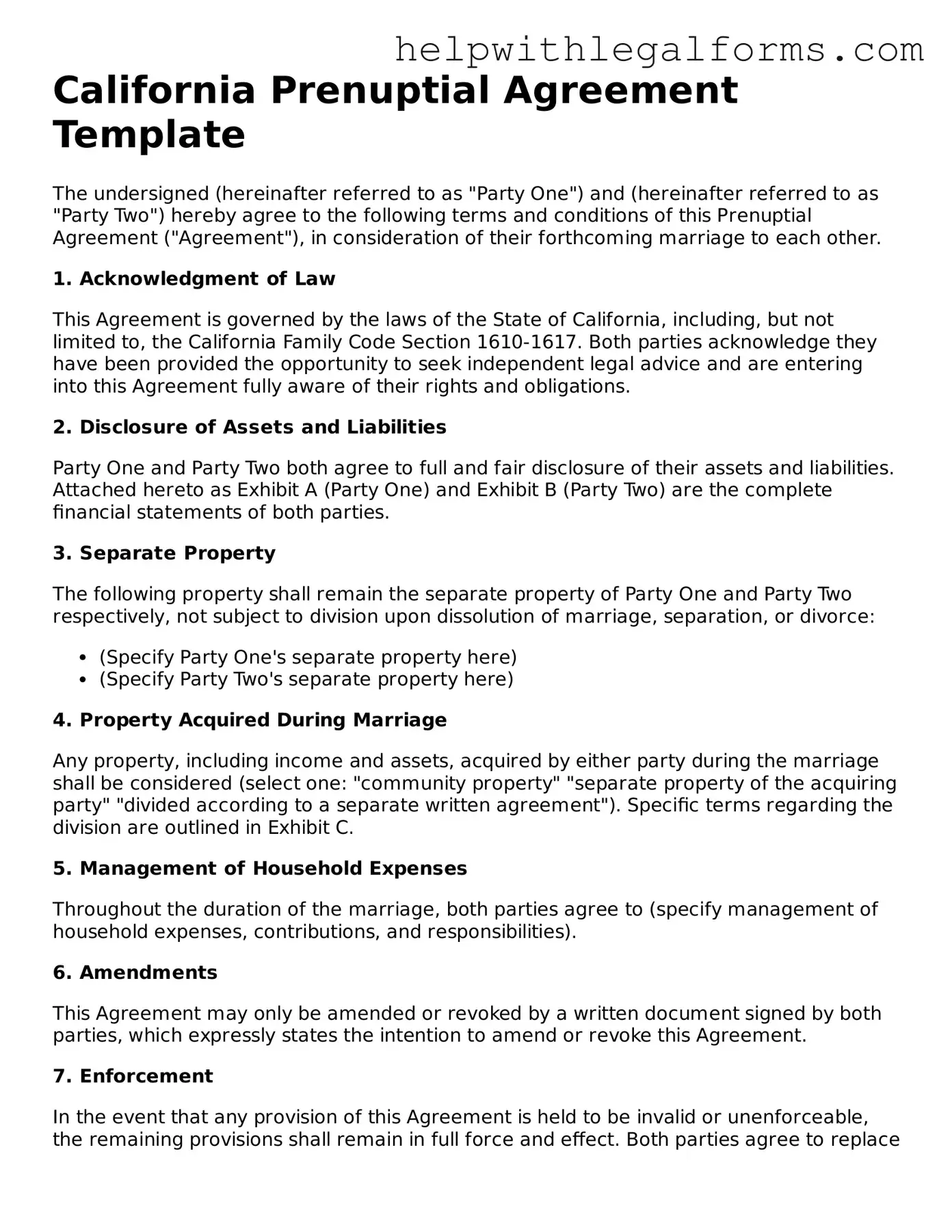California Prenuptial Agreement Template
The undersigned (hereinafter referred to as "Party One") and (hereinafter referred to as "Party Two") hereby agree to the following terms and conditions of this Prenuptial Agreement ("Agreement"), in consideration of their forthcoming marriage to each other.
1. Acknowledgment of Law
This Agreement is governed by the laws of the State of California, including, but not limited to, the California Family Code Section 1610-1617. Both parties acknowledge they have been provided the opportunity to seek independent legal advice and are entering into this Agreement fully aware of their rights and obligations.
2. Disclosure of Assets and Liabilities
Party One and Party Two both agree to full and fair disclosure of their assets and liabilities. Attached hereto as Exhibit A (Party One) and Exhibit B (Party Two) are the complete financial statements of both parties.
3. Separate Property
The following property shall remain the separate property of Party One and Party Two respectively, not subject to division upon dissolution of marriage, separation, or divorce:
- (Specify Party One's separate property here)
- (Specify Party Two's separate property here)
4. Property Acquired During Marriage
Any property, including income and assets, acquired by either party during the marriage shall be considered (select one: "community property" "separate property of the acquiring party" "divided according to a separate written agreement"). Specific terms regarding the division are outlined in Exhibit C.
5. Management of Household Expenses
Throughout the duration of the marriage, both parties agree to (specify management of household expenses, contributions, and responsibilities).
6. Amendments
This Agreement may only be amended or revoked by a written document signed by both parties, which expressly states the intention to amend or revoke this Agreement.
7. Enforcement
In the event that any provision of this Agreement is held to be invalid or unenforceable, the remaining provisions shall remain in full force and effect. Both parties agree to replace any invalid provision with a valid one which most closely represents the intentions of the parties.
8. Governing Law
This Agreement shall be governed by and construed in accordance with the laws of the State of California, without regard to its conflict of law principles.
9. Signatures
This Agreement is entered into voluntarily, with full knowledge of its significance and intentions to be legally bound.
Party One's Name: ________________________________________
Party One's Signature: ____________________________________
Date: ___________________
Party Two's Name: ________________________________________
Party Two's Signature: ____________________________________
Date: ___________________
Exhibit A - Financial Statement of Party One
(Attach detailed financial statement here)
Exhibit B - Financial Statement of Party Two
(Attach detailed financial statement here)
Exhibit C - Division of Property Acquired During Marriage
(Specify terms here)
